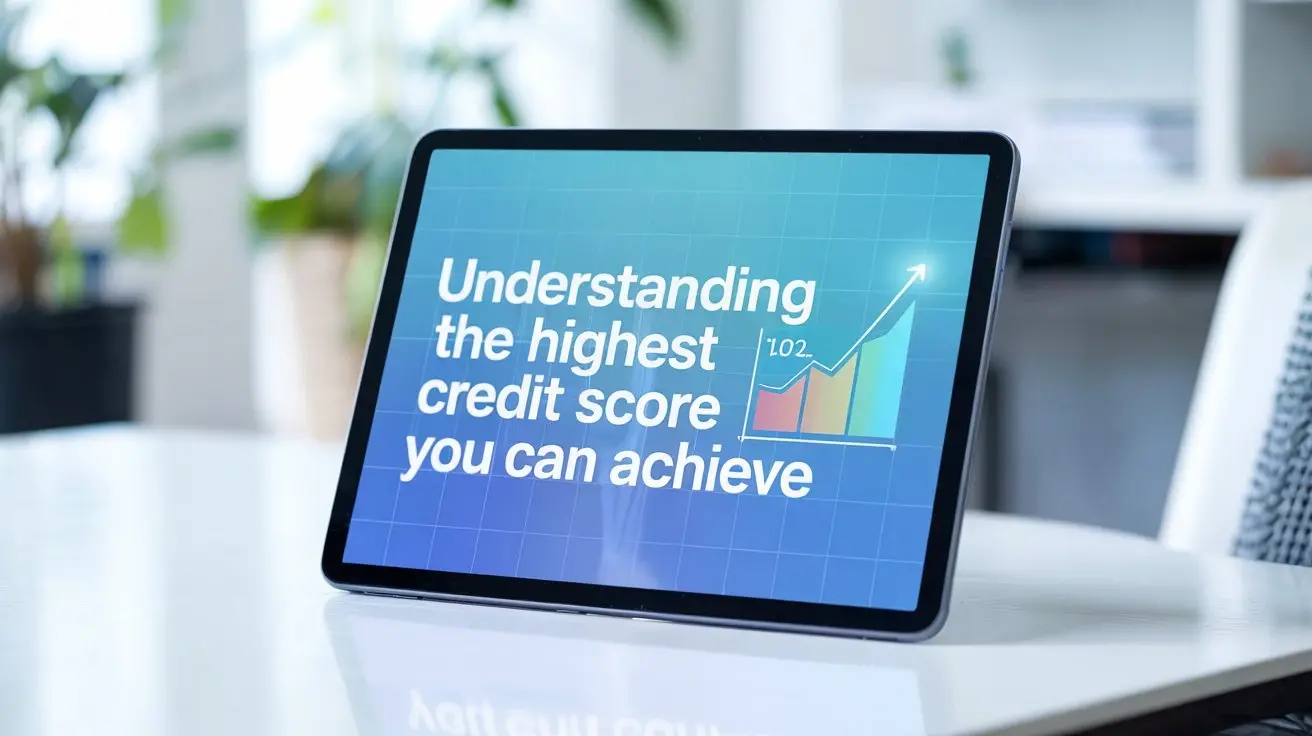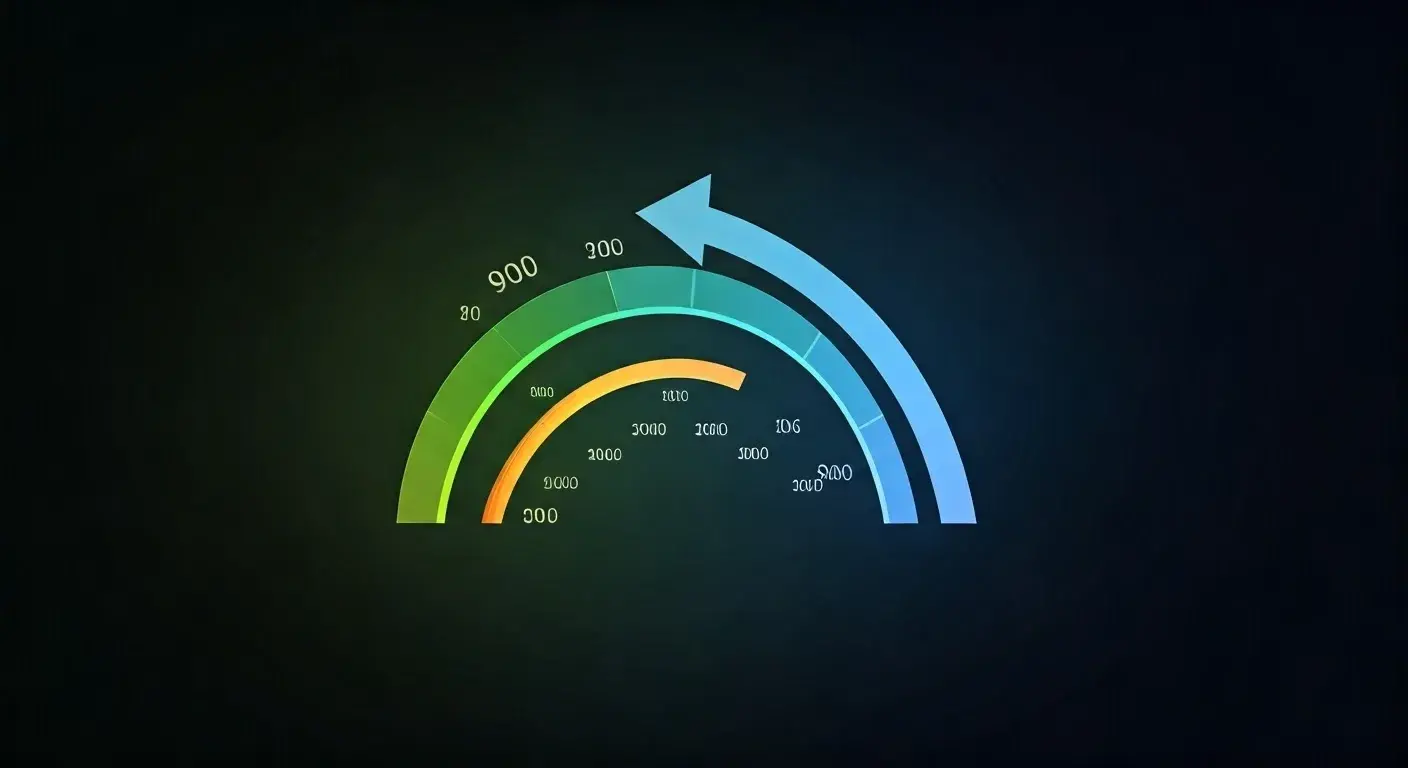-
Posted on: 30 Jan 2025

-
Understanding your credit score is paramount in today's financial landscape. This comprehensive guide, "Decoding 618: Unveiling the Truth About Good Credit Scores," demystifies credit scoring, offering actionable insights and the latest 2025 data to empower your financial journey and help you achieve your goals.
What Exactly Is a Credit Score?
A credit score is a three-digit number that lenders use to assess your creditworthiness, essentially predicting how likely you are to repay borrowed money. It's a crucial component of your financial identity, influencing your ability to secure loans, rent an apartment, and even get a job. This score is derived from the information contained in your credit report, which details your borrowing and repayment history. In essence, it's a snapshot of your financial responsibility.
The Significance of 618: Is It Truly "Good"?
The number 618 often sits in a transitional zone within credit scoring models. While not considered "poor," it's generally not classified as "excellent" either. For many lenders, a score of 618 might place you in a category where approvals are possible, but often come with less favorable terms, such as higher interest rates or larger down payments. The perception of 618 as "good" is highly subjective and depends heavily on the specific lender's risk tolerance and the type of credit product you're seeking. In the competitive landscape of 2025, aiming for a score above 700 is often the benchmark for truly advantageous financial opportunities.
Benchmarking 618 Against Industry Standards
Industry standards for credit scores typically categorize them into ranges. While these can vary slightly between credit bureaus and scoring models (like FICO and VantageScore), a general consensus for 2025 looks something like this:
Score Range Category Implication 300-579 Poor Difficult to obtain credit; high interest rates if approved. 580-669 Fair Credit may be obtainable, but with higher rates and stricter terms. 618 falls within this range. 670-739 Good Generally considered good; better interest rates and loan options. 740-799 Very Good Excellent loan terms and access to a wide range of credit products. 800-850 Exceptional Best possible rates, terms, and exclusive offers. As you can see, a score of 618 firmly resides in the "Fair" category. While it's a step above "Poor," it signifies a level of risk that lenders are more cautious about. This means that while you might be approved for certain credit products, the cost of borrowing will likely be higher compared to individuals with scores in the "Good" or "Very Good" ranges. For instance, a mortgage with a 618 score might carry an interest rate that is 1-2% higher than for someone with a 720 score, translating to tens of thousands of dollars in extra interest over the life of the loan.
How Credit Scores Are Calculated: The Key Factors
Credit scoring models are complex, but they all weigh several key factors to arrive at your three-digit score. Understanding these components is crucial for both maintaining and improving your credit standing. The most widely used scoring models, FICO and VantageScore, share a common foundation, though their exact weightings may differ. For 2025, these factors remain the bedrock of credit assessment.
Payment History: The Cornerstone
This is, by far, the most influential factor in your credit score, typically accounting for about 35% of your FICO score. Lenders want to see that you pay your bills on time, every time.
- On-time payments: The most positive signal you can send.
- Late payments: Even one late payment can significantly damage your score, especially if it's more than 30 days past due.
- Defaults and bankruptcies: These are severe negative marks that can remain on your report for years.
- Collection accounts: Accounts sent to a collection agency also indicate a failure to meet financial obligations.
In 2025, lenders are increasingly sophisticated in analyzing payment patterns. Consistent on-time payments build trust, while any slip-ups can erode it rapidly. A single 30-day late payment can drop your score by as much as 100 points, depending on your starting score.
Credit Utilization: Balancing Borrowing
This factor, usually making up about 30% of your FICO score, looks at how much of your available credit you are actually using. It's often expressed as a ratio: your total credit card balances divided by your total credit card limits.
- Low utilization is key: Experts generally recommend keeping your credit utilization ratio below 30%, and ideally below 10%.
- High utilization is a red flag: Using a large portion of your available credit can signal financial distress.
- Individual card utilization matters: It's also beneficial to keep the utilization on each individual card low.
For example, if you have a credit card with a $10,000 limit and a balance of $5,000, your utilization is 50%. If you bring that balance down to $1,000, your utilization drops to 10%, which is much more favorable for your score. In 2025, lenders are particularly attuned to high utilization on multiple cards, as it suggests a potential overextension of credit.
Length of Credit History: Time Is of the Essence
This component, typically accounting for about 15% of your FICO score, considers the age of your oldest account, the age of your newest account, and the average age of all your accounts.
- Longer history is better: A longer credit history generally indicates more experience managing credit responsibly.
- Average age matters: Simply having old accounts isn't enough; the average age of your accounts is also important.
This is why it's often advised not to close old, unused credit cards, as they contribute positively to the average age of your accounts. For individuals new to credit, building this history takes time.
Credit Mix: Diversification Matters
This factor, typically around 10% of your FICO score, examines the types of credit you have. Lenders like to see that you can manage different forms of credit responsibly.
- Mix of credit types: Having a mix of revolving credit (like credit cards) and installment loans (like mortgages or auto loans) can be beneficial.
- Not a primary driver: This factor is less important than payment history or credit utilization.
- Don't open accounts just for mix: It's generally not advisable to open new accounts solely to improve your credit mix.
For instance, having both a credit card and a car loan demonstrates an ability to manage different repayment structures.
New Credit: Opening Accounts Wisely
This factor, also around 10% of your FICO score, looks at how many new credit accounts you've opened recently and how many hard inquiries you've had.
- Too many new accounts: Opening several new credit accounts in a short period can be a red flag, suggesting financial instability.
- Hard inquiries: When you apply for credit, lenders often perform a "hard inquiry" on your credit report. Too many hard inquiries in a short time can lower your score.
- Rate shopping is an exception: For mortgages and auto loans, you can typically shop for rates within a specific window (e.g., 14-45 days) without significantly impacting your score, as these are often treated as a single inquiry.
Opening one or two new accounts responsibly over a year is unlikely to hurt your score, but opening five or six can have a noticeable negative impact.
Understanding Credit Score Ranges in 2025
The landscape of credit scoring is dynamic, with models being updated to reflect economic conditions and lending practices. In 2025, the general understanding of credit score ranges remains consistent with previous years, but the implications of each range are perhaps more pronounced due to increased data analytics by lenders.
Let's revisit the ranges and their implications for 2025:
- Exceptional (800-850): You are the ideal borrower. Lenders compete for your business, offering the lowest interest rates, highest credit limits, and often preferential treatment. You can expect approval for virtually any credit product.
- Very Good (740-799): You are a highly desirable borrower. You'll qualify for excellent interest rates on mortgages, auto loans, and credit cards. Lenders view you as low-risk.
- Good (670-739): This is a solid range that most lenders consider acceptable. You'll likely qualify for most credit products with competitive interest rates, though perhaps not the absolute best. This is a common target for many consumers looking to improve their financial standing.
- Fair (580-669): This is where a score of 618 resides. You can often still obtain credit, but expect higher interest rates, lower credit limits, and potentially higher fees. Lenders see a moderate level of risk. For example, an auto loan might come with an APR of 8-12% compared to 4-6% for someone with a "Good" score.
- Poor (300-579): Obtaining credit can be very challenging. If approved, interest rates will be extremely high, and terms will be unfavorable. This range indicates significant risk to lenders, often stemming from serious credit delinquencies or defaults.
The distinction between "Fair" and "Good" is significant. Moving from a 618 to a 670 can mean saving hundreds or even thousands of dollars annually on interest payments alone. In 2025, with the increasing use of AI in lending, these score ranges are more precisely mapped to risk profiles, making the difference between categories even more impactful.
Why a Good Credit Score Matters: The Tangible Benefits
A good credit score isn't just a number; it's a key that unlocks significant financial advantages. In 2025, its importance continues to grow as more aspects of our lives are tied to our financial reputation.
Lower Interest Rates
This is perhaps the most significant benefit. When you have a good credit score, lenders see you as a reliable borrower, meaning they are willing to lend you money at a lower interest rate. Over the life of a large loan, like a mortgage or a car loan, this can translate into tens of thousands of dollars saved.
Example: Consider a $300,000 mortgage over 30 years.
- With a 720 credit score (Good): You might get an interest rate of 6.5%. Your monthly payment would be approximately $1,896, and the total interest paid over 30 years would be around $382,500.
- With a 618 credit score (Fair): You might face an interest rate of 8.0%. Your monthly payment would be approximately $2,202, and the total interest paid over 30 years would be around $492,700.
That's a difference of over $110,000 in interest paid, simply due to the credit score.
Easier Loan and Credit Card Approvals
A strong credit score significantly increases your chances of being approved for loans and credit cards. This means you'll have access to a wider range of financial products, including those with better rewards, lower fees, and more flexible terms. When you need to finance a major purchase or cover an unexpected expense, having good credit makes the process smoother and less stressful.
Better Terms and Conditions
Beyond just interest rates, a good credit score can lead to more favorable terms on loans and credit cards. This might include higher credit limits, lower annual fees, longer repayment periods, or fewer restrictions on how you use your credit. Lenders are more willing to offer their best products to borrowers they trust.
Rental Approvals
Landlords often check credit scores to assess the reliability of potential tenants. A good score can make it easier to secure the apartment or house you want, especially in competitive rental markets. A low score might lead to rejection or the requirement of a larger security deposit or a co-signer.
Lower Insurance Premiums
In many states, insurance companies use credit-based insurance scores to help determine premiums for auto and homeowners insurance. Studies have shown a correlation between credit history and the likelihood of filing claims. A good credit score can lead to lower insurance costs, saving you money on essential policies.
Utility Deposits
When setting up utilities like electricity, gas, or water, companies may check your credit. A good score can often waive or reduce security deposits, saving you upfront costs.
Employment Opportunities
Some employers, particularly in industries involving financial responsibility or access to sensitive information, may review credit reports as part of the hiring process. A clean credit history can be a positive indicator of responsibility and trustworthiness.
Strategies to Improve Your Credit Score
If your credit score is around 618, there are concrete steps you can take to improve it. The key is consistency and understanding how your actions impact your score. Here are actionable strategies for 2025.
Mastering On-Time Payments
This is the single most effective way to boost your score. Since payment history is 35% of your FICO score, making every payment on time is paramount.
- Set up automatic payments: For credit cards, loans, and other bills, enable auto-pay to ensure you never miss a due date.
- Use payment reminders: If auto-pay isn't feasible, set calendar alerts a few days before each bill is due.
- Pay at least the minimum: If you're struggling to pay the full balance, always pay at least the minimum amount by the due date to avoid a late mark.
- Address past-due accounts: If you have any accounts that are currently past due, pay them off as soon as possible.
It takes time for positive payment history to significantly impact your score, but consistently paying on time will eventually lead to improvement.
Tackling Credit Utilization
Credit utilization accounts for about 30% of your score. Lowering your credit utilization ratio is a powerful way to increase your score relatively quickly.
- Pay down balances: Focus on paying down the balances on your credit cards. Prioritize cards with the highest utilization ratios.
- Increase credit limits: Contact your credit card issuers and request a credit limit increase. If approved, this will lower your utilization ratio, assuming your balance remains the same. Be cautious not to spend more just because your limit is higher.
- Spread out payments: If you have multiple credit cards, try to keep the balances low on all of them, rather than maxing out one card while others are at zero.
- Aim for below 30%, ideally below 10%: For optimal results, keep your overall credit utilization and individual card utilization below these thresholds.
For example, if you have a $1,000 balance on a card with a $2,000 limit (50% utilization), paying down $500 to reach a $500 balance would bring your utilization to 25%, a significant improvement.
Leveraging Credit History Length
While you can't speed up time, you can make decisions that positively influence the average age of your credit accounts.
- Keep old accounts open: Avoid closing older credit cards, even if you don't use them often. They contribute to the average age of your credit history. Use them occasionally for small purchases and pay them off immediately to keep them active.
- Be patient: Building a long credit history takes years. Focus on responsible behavior with your current accounts.
Building a Healthy Credit Mix
Credit mix is about 10% of your score, so it's less critical than payment history or utilization, but still worth considering.
- Diversify responsibly: If you only have credit cards, consider if a small installment loan (like a secured loan or a small personal loan) might be appropriate for your financial situation, once you've stabilized your existing credit.
- Avoid unnecessary debt: Do not take out loans you don't need solely to improve your credit mix. The risk of accumulating debt outweighs the potential benefit.
Smartly Managing New Credit Applications
Opening new credit accounts can temporarily lower your score due to hard inquiries and the reduction in the average age of your accounts.
- Apply strategically: Only apply for credit when you genuinely need it.
- Understand rate shopping: For mortgages and auto loans, take advantage of the rate-shopping window to compare offers without excessive score damage.
- Space out applications: If you need to apply for multiple credit cards, space them out over several months or even a year.
Correcting Errors on Your Credit Report
Errors on your credit report can unfairly drag down your score. It's essential to review your reports regularly.
- Obtain your credit reports: You are entitled to a free credit report from each of the three major credit bureaus (Equifax, Experian, and TransUnion) annually at AnnualCreditReport.com.
- Review for inaccuracies: Look for incorrect personal information, accounts you don't recognize, late payments that were actually on time, or incorrect balances.
- Dispute errors: If you find an error, dispute it with the credit bureau and the creditor that reported the information. Provide documentation to support your claim. The bureaus are required to investigate.
Correcting an error can lead to an immediate score improvement.
Debunking Common Credit Score Myths
The world of credit scores is rife with misinformation. Understanding the truth behind these myths can save you from making costly mistakes.
- Myth: Checking your own credit score hurts your score.
Truth: This is false. When you check your own credit score (a "soft inquiry"), it does not affect your score. Only when a lender checks your credit for a new loan application (a "hard inquiry") does it have a potential impact.
- Myth: Closing old credit cards will immediately boost your score.
Truth: In fact, closing old, unused credit cards can hurt your score. It reduces your average credit history length and can increase your credit utilization ratio if you have balances on other cards.
- Myth: You need to carry a balance to build credit.
Truth: This is a dangerous myth. You build credit by demonstrating responsible repayment behavior. Paying your balance in full and on time each month is the best strategy. Carrying a balance incurs interest and can negatively impact your credit utilization.
- Myth: Your credit score is static and never changes.
Truth: Your credit score is dynamic and can change frequently as new information is added to your credit report. Consistent good financial habits will improve your score over time.
- Myth: Everyone uses the same credit score.
Truth: While FICO and VantageScore are the most common models, there are many variations and industry-specific scores. Lenders choose the score that best suits their needs. Your score can also vary slightly between credit bureaus due to reporting differences.
- Myth: Paying off collections immediately removes them from your report.
Truth: Paid collections are still visible on your credit report for up to seven years. While paying them off is generally advisable, it doesn't erase them instantly.
The Importance of Credit Monitoring
In the digital age of 2025, actively monitoring your credit is more crucial than ever. It's not just about tracking your score; it's about safeguarding your financial identity.
- Detecting identity theft: Regular monitoring allows you to spot fraudulent activity or accounts opened in your name quickly. Early detection is key to minimizing damage.
- Identifying errors: As discussed, errors can occur on credit reports. Monitoring helps you catch these inaccuracies before they significantly impact your score.
- Tracking progress: If you're actively working to improve your credit score, monitoring provides a clear view of your progress and helps you understand which strategies are most effective.
- Staying informed: Knowing your credit score and report details empowers you to make informed financial decisions.
Many credit card companies and financial institutions now offer free credit monitoring services. Additionally, paid services provide more comprehensive features, including real-time alerts and identity theft protection. For anyone with a score around 618, diligent monitoring is a vital part of their improvement strategy.
Credit Scores in Action: Loan Approvals and Beyond
Your credit score is a gatekeeper for many financial products. Understanding how it affects specific applications can help you prepare and strategize.
Mortgages
Mortgage lenders are highly sensitive to credit scores. A score of 618 will likely mean higher interest rates, potentially disqualifying you from the best loan programs. Lenders often require scores in the 620-660 range minimum for conventional loans, with scores above 740 securing the most advantageous terms.
Auto Loans
Similar to mortgages, auto loan interest rates are heavily influenced by your credit score. A 618 score might qualify you for a loan, but the APR could be significantly higher than for someone with a "Good" score, leading to higher monthly payments and more interest paid over the loan term.
Personal Loans
Unsecured personal loans are often riskier for lenders, so credit scores are a primary factor. A score of 618 might limit your options to lenders specializing in subprime loans, which come with elevated interest rates.
Credit Cards
Obtaining premium rewards cards or low-interest balance transfer cards will be challenging with a 618 score. You're more likely to qualify for secured credit cards or cards designed for individuals with fair credit, which may have annual fees or lower credit limits.
Student Loans
Federal student loans generally do not require a credit check for federal direct loans, making them accessible regardless of your credit score. However, private student loans and PLUS loans for parents or graduate students often do involve credit checks, and a 618 score could impact approval and terms.
Conclusion: Your Path to Financial Health
Decoding your credit score, especially when it hovers around 618, is the first step towards unlocking a world of financial opportunities. While a score of 618 falls into the "Fair" category, signifying a moderate risk to lenders, it is far from a dead end. The truth is, this score is a malleable number, highly responsive to consistent, responsible financial behavior. By understanding the core components of credit scoring – payment history, credit utilization, credit history length, credit mix, and new credit – you gain the power to influence your score positively.
The strategies outlined in this guide, from mastering on-time payments and diligently reducing credit utilization to strategically managing new credit and correcting errors, are your roadmap. In 2025, the financial landscape rewards those who are proactive and informed. Don't let misconceptions about credit scores hold you back. Embrace the journey of credit improvement with patience and persistence. Regularly monitoring your credit reports, understanding the impact of your score on various financial products like mortgages and auto loans, and consistently applying sound financial practices will not only raise your score but also pave the way for lower interest rates, better loan terms, and ultimately, greater financial freedom. Your 618 score is a starting point, not a destination; take control today and build the strong credit future you deserve.











